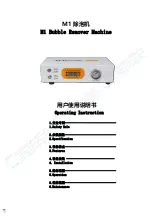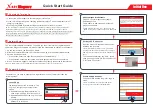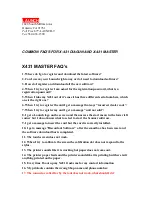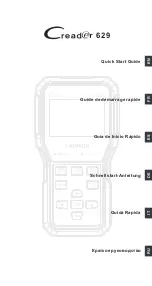
GETTING ON AND OFF THE TRAMPOLINE
Climb onto and off of the trampoline. Do not jump onto or off of it. Do not use the trampoline as a springboard to jump to
other objects or places.
ENTERING AND EXITING THE TRAMPOLINE ENCLOSURE
Un-zip and un-clip opening and place one knee on the frame pad and climb head first through the door and crawl to the
center of the mat. A responsible adult supervisor must zip the enclosure closed and clip the horizontal clips to the D-ring
attached to the net. You will then fasten the zipper clip to the D-ring on the jump mat. The purpose of these clips is to
ensure the zippered opening in the enclosure stays closed during use.
To leave the enclosure, have the responsible adult supervisor unfasten the zipper pull clips from the jumping mat D-ring
and then unfasten the horizontal clips from the attached D-rings. Unzip the enclosure upwards. Sit on the mat (bed) of
the trampoline and climb feet first through the door. When you are through the door and sitting on the frame pad,
carefully step or jump to the ground. Close the zippers and refasten the plastic clips.
For additional information regarding equipment, contact Skywalker Holding, LLC. For additional information regarding
skill training, contact a trainer certification organization.
USE AND INSTRUCTIONAL MATERIAL
OVERVIEW OF TRAMPOLINE USE
The first periods of trampoline use should focus on learning fundamental body positions and practicing the eight basic
bounces that are described on pages 11 and 12.
During this learning period, jumpers should practice these basic techniques and perfect them. Braking, or checking the
bounce, should be taught first and stressed as a safety measure. Jumpers should brake their jump whenever they start to
lose their balance or control. This is done by simply flexing the knees sharply upon landing and absorbing the upward
thrust of the mat. This allows the jumper to stop suddenly and avoid losing control.
With trampoline use, the takeoff point and landing point of a good, controlled jump are in the same spot. An exercise is
considered learned only when a jumper is able to perform it correctly time after time. Jumpers should never go on to any
advanced stunt until they can perform all previous stunts correctly each time.
Allow each jumper a brief turn on the trampoline. Extended bouncing exposes an overtired user to an increased risk of
injury. Longer turns tend to lessen the interest of others waiting to jump. Clothing should consist of a T-shirt and shorts.
Jumpers should wear regulation gymnastic shoes or heavy socks, or they may jump barefoot. Street shoes or tennis shoes
should not be worn on the trampoline. Beginning jumpers may wish to wear loose-fitting protective clothes, such as a
long-sleeve shirt and pants, until correct landings are mastered. This will reduce the chance of mat (bed) burns from
improper landings on elbows and knees. No hard-sole shoes should be worn, as they cause extra wear on the trampoline mat.
Mounting and dismounting (getting on and off) properly should be a strict rule from the beginning. Users should climb
onto the trampoline by placing their hands on the frame and stepping or rolling up onto the frame, across the springs, and
onto the mat. They should not step directly on the frame pad or hold on to the frame pad when getting onto or off of the
trampoline. Users should always place their hands on the frame while getting on or off. To get off, jumpers should walk to
the side of the mat, bend over and place one hand on the frame, and then step from the mat to the ground. If you have
installed the optional ladder, its rungs can be used to get on or off. Always face the ladder and place your hands on the
frame. Make sure your foot has secure contact with the ladder rung when using it.
Reckless bouncing should not be permitted. All skills should be learned at moderate heights. Control, rather than height,
should be emphasized. Jumpers should be forbidden to practice alone and unsupervised.
9
Summary of Contents for SWTCS13
Page 13: ...Key 13 ...










































